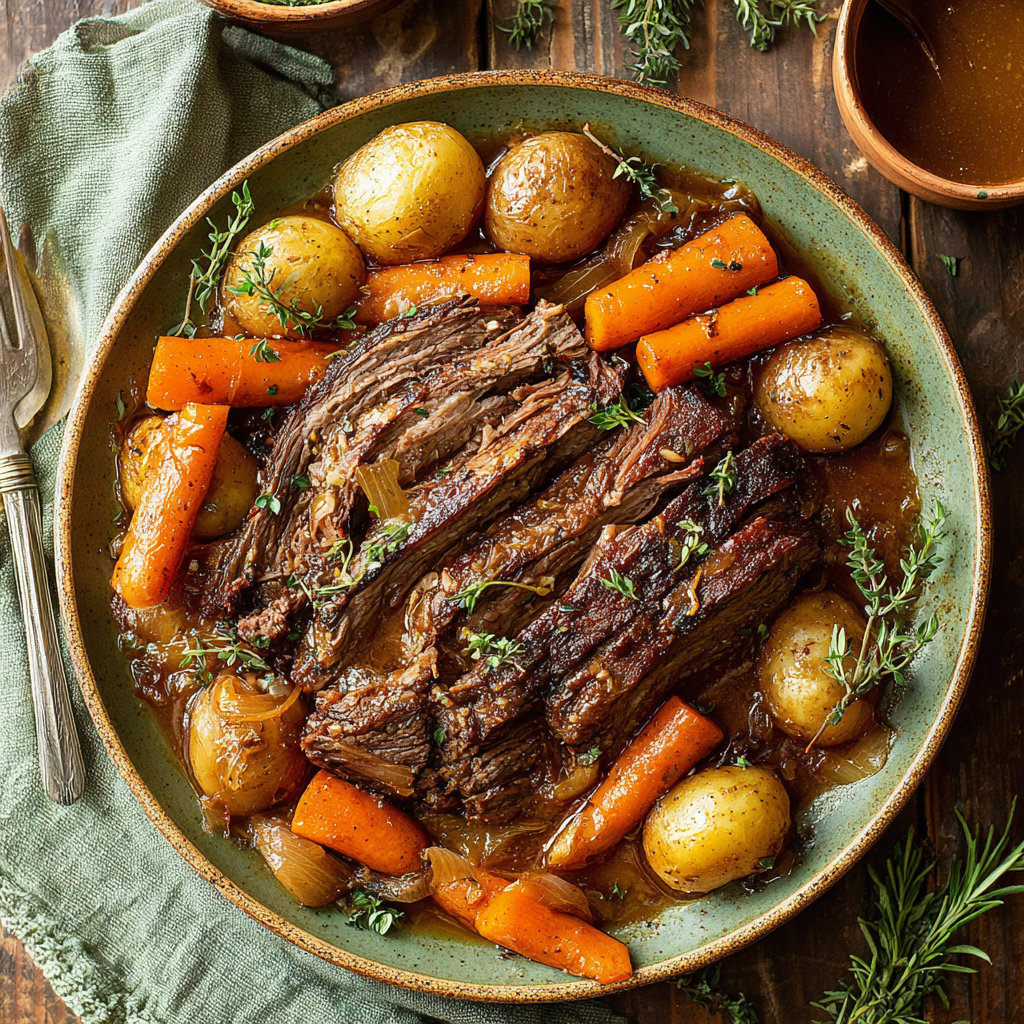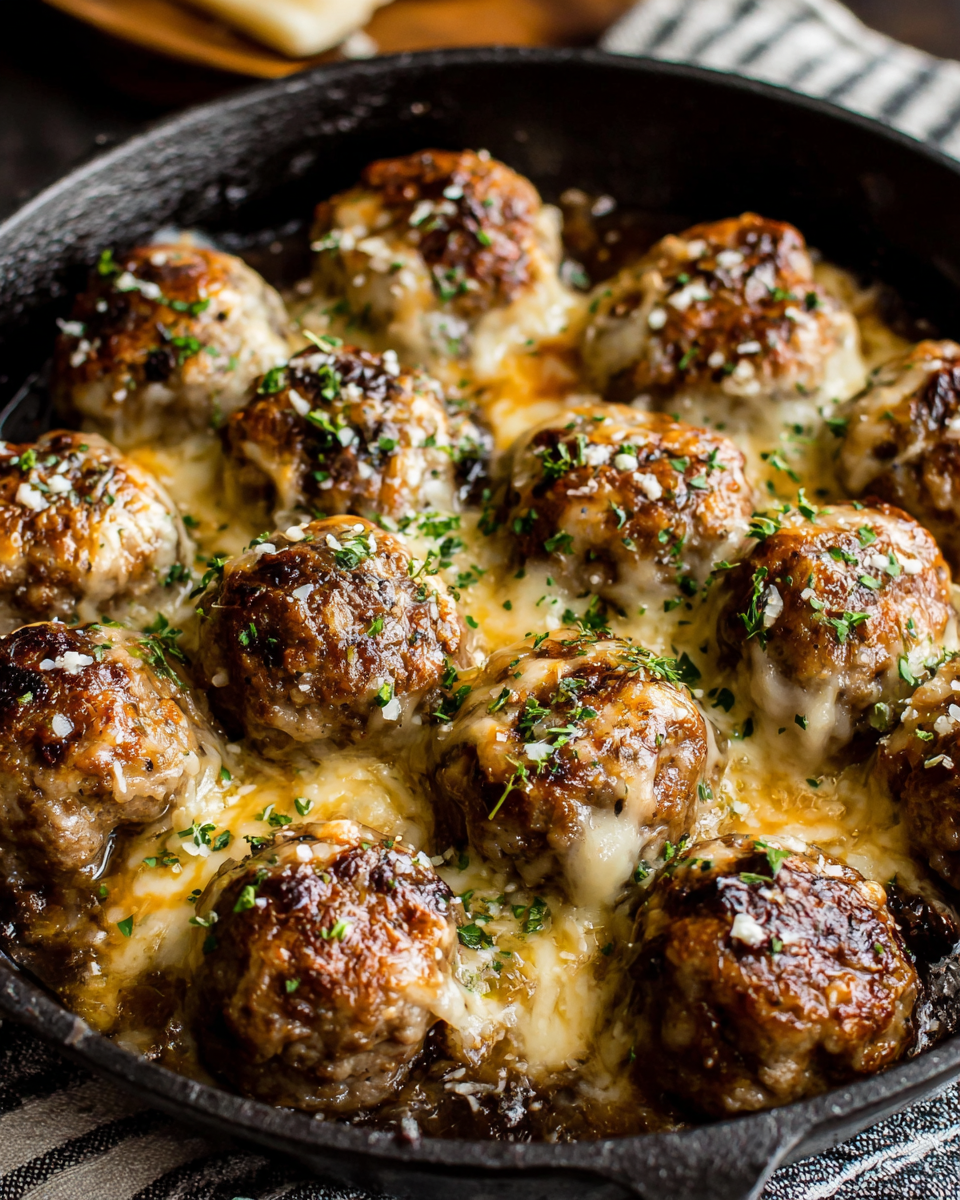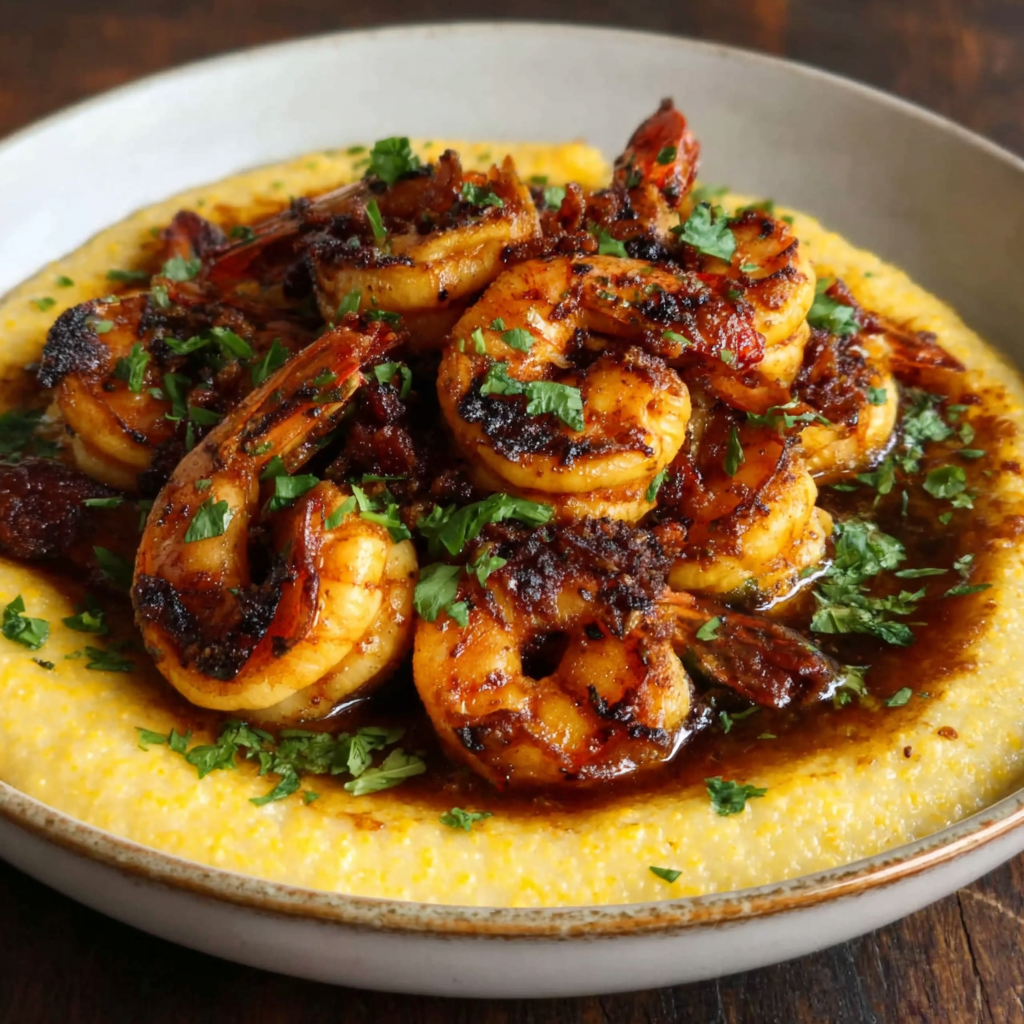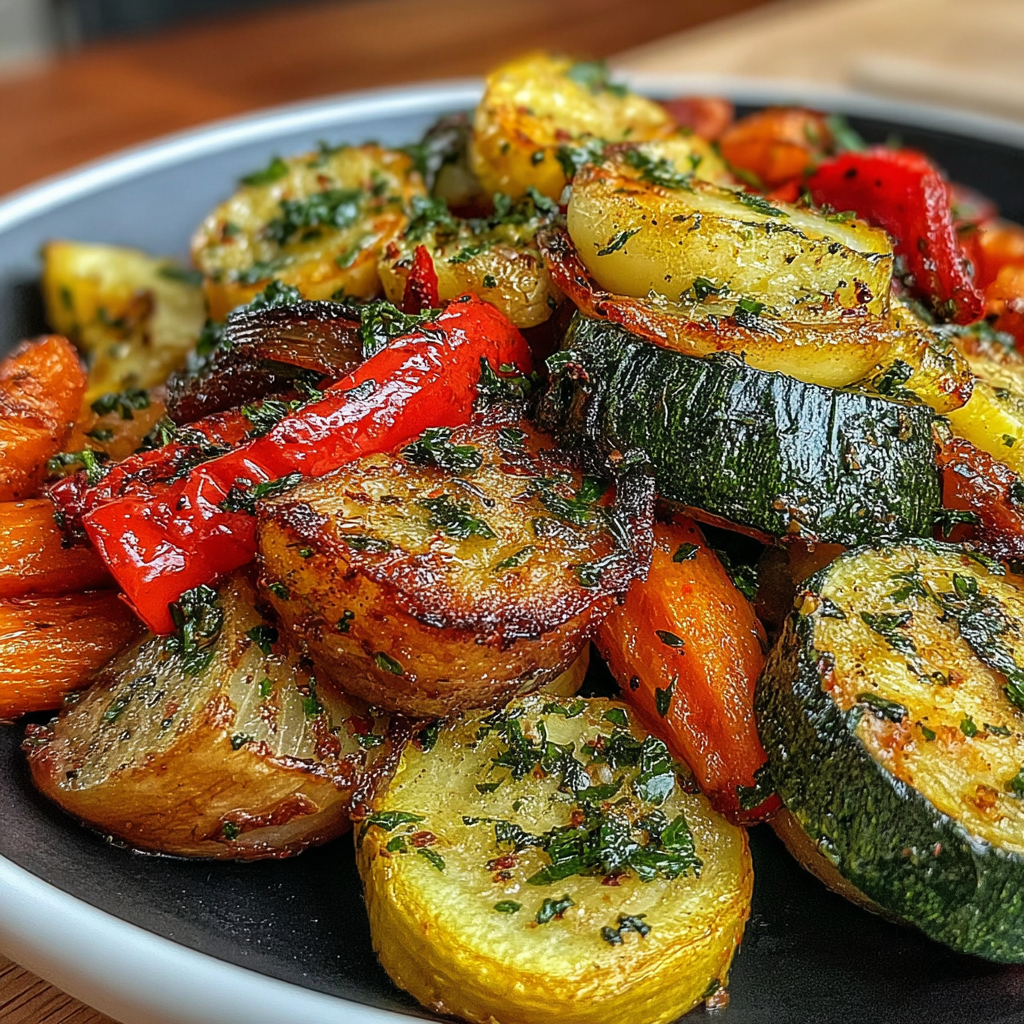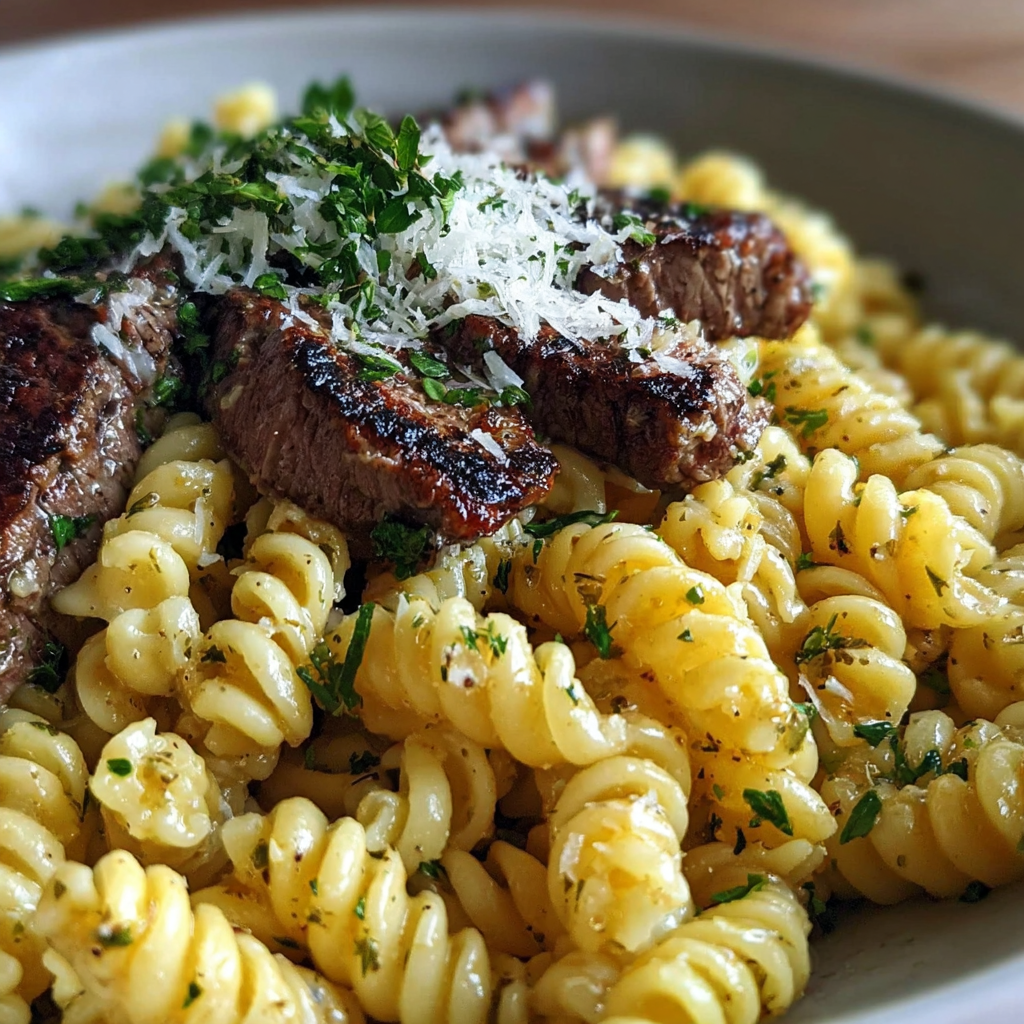Introduction
There's something undeniably comforting about a hearty pot roast, especially when made effortlessly in a slow cooker. The long, low cooking method ensures every bite is packed with flavor and tenderness, making it a perfect choice for busy weeknights or cozy family dinners.
Using a slow cooker not only simplifies the cooking process but also fills your home with the inviting aroma of seasoned meat and rich broth. As the pot roast simmers, the meat becomes meltingly tender, while the vegetables soak up all the delicious flavors.
This recipe allows for ease and adaptability, offering a satisfying meal without any fuss. Gather around the table and enjoy a classic dish that brings warmth and satisfaction to every bite.
Ingredients
- 3 to 4 pounds beef chuck roast
The chuck roast is ideal for pot roasting due to its marbling, which breaks down into tender and juicy meat during the slow cooking process. It also has a rich beef flavor that enhances the overall dish. - 2 tablespoons olive oil
Olive oil is used for browning the meat, which adds depth of flavor and creates a delicious crust on the roast. It also helps to keep the meat moist as it cooks. - 1 onion, chopped
Onions add sweetness and savory depth to the dish. As they cook down, they caramelize slightly, contributing to a rich flavor base that infiltrates the entire pot roast. - 3 cloves garlic, minced
Garlic brings an aromatic quality and enhances the savory notes of the pot roast. It infuses the dish with flavor that develops over the slow cooking time. - 4 carrots, chopped
Carrots offer a natural sweetness and beautiful color to the pot roast, while also soaking up the rich flavors from the meat and broth as they cook. - 3 stalks celery, chopped
Celery adds a fresh crunch and subtle earthy taste, supporting the overall flavor profile of the pot roast and enhancing the vegetable medley. - 4 cups beef broth
Beef broth serves as the cooking liquid that keeps the pot roast moist and adds robust flavor. It acts as a base for the sauce that develops as the roast cooks. - 1 tablespoon Worcestershire sauce
Worcestershire sauce offers a complex umami flavor, contributing to the depth and richness of the sauce while also complementing the beef perfectly. - 1 teaspoon dried thyme
Thyme adds a subtle herby fragrance and flavor, enhancing the overall taste of the pot roast and pairing nicely with the slow-cooked meat. - Salt and pepper to taste
Seasoning is crucial for enhancing the flavor of the pot roast. It ensures each component in the dish tastes balanced and delicious.
Directions & Preparation
Step 1: Brown the chuck roast.
Start by heating the olive oil in a large skillet over medium-high heat. Sear the chuck roast for about 4 to 5 minutes on each side until a deep brown crust forms. This step locks in juices and enhances the meat's flavor, creating a savory foundation for the pot roast.
Step 2: Prepare the vegetables.
While the roast is browning, chop the onions, carrots, and celery. Mince the garlic as well. These vegetables not only provide flavor but also infuse moisture during cooking, ensuring the pot roast is tender and the veggies are perfectly cooked and infused with flavor.
Step 3: Place ingredients in the slow cooker.
Once the roast is browned, transfer it to the slow cooker. Surround it with the prepared vegetables and pour the beef broth over the top. The broth helps to keep everything moist and creates a flavorful cooking environment for the roast.
Step 4: Add seasonings.
Drizzle the Worcestershire sauce over the roast and sprinkle in thyme, salt, and pepper. These seasonings are critical as they enhance the overall taste and balance the savory flavors, ensuring every bite is deliciously seasoned.
Step 5: Cover and cook.
Set the slow cooker on low and let it cook for 8 to 10 hours, or on high for 4 to 6 hours. This long, slow cooking method allows the marbled fat in the chuck roast to render down, yielding incredibly tender meat that falls apart easily.
Step 6: Check for doneness.
Towards the end of cooking, check that the roast reaches an internal temperature of 190°F. This temperature ensures the connective tissues break down fully, resulting in a succulent and flavorful finished product.
Step 7: Serve the pot roast.
Once cooked, remove the roast and vegetables from the slow cooker. Allow the roast to rest briefly before slicing. Serve with the vegetables and spoon some of the savory cooking liquid over the top to keep everything moist and flavorful.

The Secret to Flavorful Gravy
After your pot roast is ready, consider using the remaining cooking liquid as a base for a delicious gravy. Simply strain out the solids, then reduce the liquid in a saucepan for extra concentration. A touch of cornstarch or flour mixed with water can thicken it beautifully to create a rich, velvety gravy that enhances the entire dish.
Creative Side Pairings
Although pot roast traditionally pairs with mashed potatoes, don't shy away from exploring other sides. Consider serving it with creamy polenta, roasted root vegetables, or even a simple fresh salad to add brightness. Each of these options adds a new dimension to the meal and complements the rich flavors of the pot roast.
Making It Your Own
Feel free to customize the vegetables in your pot roast to suit your tastes. Add potatoes for heartiness, parsnips for sweetness, or mushrooms for an earthy flavor. Experimenting with herbs like rosemary or adding a splash of red wine to the broth can also give the dish your unique signature flair.
FAQs
What if the pot roast is too salty?
If the pot roast turns out too salty, try adding extra water or broth to the cooking liquid and letting it simmer to dilute the salt. You can also serve it with a side of something bland, like mashed potatoes, to balance the flavors.
Can I use a different cut of beef for this recipe?
Yes, while chuck roast is ideal, you can also use brisket or round roast. However, keep in mind that cooking times and tenderness may vary depending on the cut.
What should I do if my pot roast is overcooked?
If your pot roast becomes overcooked, try shredding the meat and mixing it with some of the cooking liquid to keep it moist. This makes for delicious sandwiches or a comforting pot pie filling.
Is there a way to add more depth of flavor?
You can enhance the flavor by adding a splash of red wine to the broth or including anchovy paste in the seasoning. Both elements provide umami depth that elevates your pot roast.
How can I ensure the vegetables are cooked properly?
To ensure even cooking, cut the vegetables into uniform sizes and place root vegetables like carrots and potatoes at the bottom of the slow cooker, where they will receive more heat.
Can I add more herbs to the pot roast?
Absolutely! Fresh herbs like rosemary or bay leaves can be added along with the thyme for an aromatic boost. Just remember to remove whole herbs before serving.
Conclusion
This easy slow cooker pot roast is everything you need for a comforting meal. With its tender meat, flavorful broth, and perfectly cooked vegetables, it sets the stage for a delightful dining experience.
By embracing the simplicity of slow cooking, you can fill your home with inviting aromas and create a dish that warms the heart and nourishes the soul. Enjoy this recipe as a cornerstone of family gatherings or comforting weeknight meals.
Recipe Card
Notes
Additional serving suggestions: pair with a crisp salad, garlic bread, or roasted seasonal vegetables for balance.
For make-ahead, prep components separately and assemble just before heating to preserve texture.
Taste and adjust with acid (lemon/vinegar) and salt right at the end to wake up flavors.
